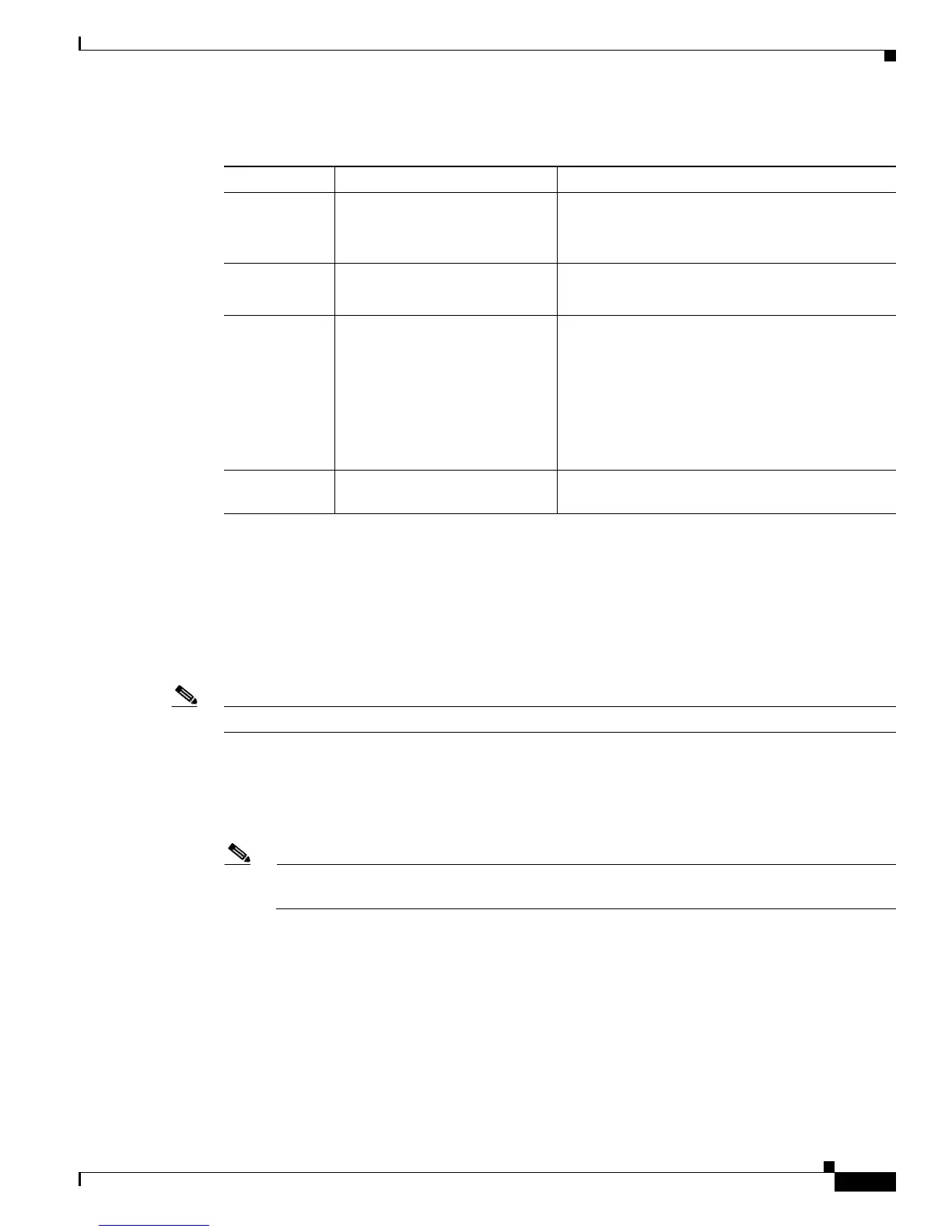11-3
Cisco 10000 Series Router Quality of Service Configuration Guide
OL-7433-09
Chapter 11 Managing Packet Queue Congestion
Queue Limit
When a packet queue temporarily experiences congestion, increasing the depth of the queue using the
queue-limit command reduces the number of packets dropped. However, setting the queue limit to a
high value might reduce the number of packet buffers available to other interfaces.
The queue limit applies to each buddy queue on links with:
• At least 500 Mbps (PRE1)
• 1 Gbps (PRE2)
Note The PRE3 does not use buddy queues.
If you do not specify a queue limit, the router calculates the default buffer size for each class queue as
follows:
• Class queues with weighted random early detection (WRED)—The router uses the default queue
limit of two times the largest WRED maximum threshold value, rounded to the nearest power of 2.
Note For Cisco IOS Release 12.2(15)BX and Release 12.2(16)BX, the router does not round the value
to the nearest power of 2.
• Class queues without WRED—The router has buffers for up to 50 milliseconds of 256-byte packets
(PRE2) or 250-byte packets (PRE3) at line rate, but not less than 32 packets (PRE2) or 16 packets
(PRE3).
• Priority queues without WRED—The router has buffers for up to 25 milliseconds of 80-byte packets
at line rate, but not less than 32 packets (PRE2) or 16 packets (PRE3).
Ta b l e 11-2 Packets Per Queue
Processor Cisco IOS Release Packets Per Queue
PRE1 All releases 32 to 16,384
If you do not specify a value that is a power of 2,
the router uses the nearest power of 2.
PRE2 Cisco IOS Release 12.2(15)BX
and Release 12.2(16)BX
32 to 16,384
The value does not need to be a power of 2.
PRE2 Cisco IOS Release 12.3(7)XI
and later releases
Interfaces with speeds that are less than 500 MB
8 to 4,096 packets per queue
The value must be a power of 2.
Interfaces with speeds that are greater than 500 MB
128 to 64,000 packets per queue
The value must be a power of 2.
PRE3
PRE4
Cisco IOS Release 12.2(31)SB2
and later releases
16 to 32,767

